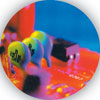

Lead has long been recognised as a highly toxic material that can cause brain damage. Its use in paint was banned in 1978 and it is being removed from petrol to further protect human health. But a burgeoning source – electronic waste – poses a substantial new threat to the environment as lead and other chemicals leach from computers, cellphones and other electronic devices being buried in landfills.
As of 1 July, the European Union has implemented strict limits on the amount of lead and other hazardous materials lurking within the circuitry of any electronic appliance sold in Europe - this via its Waste Electrical and Electronic Equipment directive and its Restriction of Hazardous Substances directive. However, given the global nature of the electronics industry, the European ban is in essence, international in scope.
As electronics and appliance manufacturers are scrambling to meet these new restrictions, a lead-free solder developed at the US Department of Energy's Ames Laboratory (www.ameslab.gov), is playing a key role.
Solder is the shiny metallic 'glue' that holds components on circuit boards and bonds other electrical connections. Though a computer's circuit boards contain only small amounts of lead solder, the problem is overall volume. By some estimates, about 3000 tons of electronic waste is discarded daily, just in the US.
Composed of lead and tin, traditional solder melts and flows easily, but sets quickly to create a strong, durable bond between the mating surfaces. A solder blend of 63% tin and 37% lead, results in a eutectic alloy - one that acts like a pure metal with a single melting (and solidification) point.
"Finding a substitute for lead that gave the solder similar properties was difficult," said Ames Laboratory senior metallurgist Iver Anderson. "With our basic understanding of alloys, we developed a tin-silver-copper alloy that offered a lower melting temperature and greater strength than other lead-free alternatives being considered."
The Ames Laboratory's solder technology was patented in 1996 and more than 60 companies worldwide have licensed its lead-free solder, according to Ken Kirkland, executive director of the Iowa State University Research Foundation (ISURF).
The Ames Lab solder is just one of several lead-free alternatives on the market. The type and specific composition of lead-free solder also depends on the soldering technique used and the end application. In addition to the tin-silver-copper alloy, Anderson's group developed modified alloys that also contained iron, cobalt, and other similar elements. This blend is suitable for higher temperature applications and has also been patented by ISURF.
One ongoing problem with lead-free alternatives now available, is a tendency to get brittle over time after repeated or prolonged heating cycles. And heat has become a growing factor as technological advances have boosted operating temperatures. For example, the steady climb in computer processor speeds has meant a corresponding increase in the amount of heat they generate. And computers are not the only devices that generate heat.
"Even the circuitry in your cellphone operates at about 125°C," Anderson notes, "and over six months' use, that can mean several hundred hours of high temperatures. If you drop it now, the solder joints have become more brittle and the risk of it 'breaking' is higher."
To combat this solder 'ageing' problem, Anderson's group has recently been studying more additives to the tin-silver-copper formula, including silicon, titanium, chromium, manganese, nickel, zinc and germanium. Joints soldered with the different alloys were subjected to 150°C for 1000 hours, then tested for both shear strength and impact strength.
"Zinc appears to be most attractive in terms of retained ductility and strength," Anderson said, "and also offers benefits in terms of solderability, ease of alloying and material cost." While additional testing is needed, he added that the tin-silver-copper-zinc composition is covered under the original patent.
One other benefit of this recent work is development of a simple technique for characterising the bulk composition of solder joints using an electron microprobe. This permits Anderson's research team to analyse the new compositions being studied under different soldering conditions.
"With the elimination of lead, tin-silver-copper solders are here for the long-run," Anderson said. "But that does not mean we will stop trying to improve our basic understanding of how these alloys work in order to improve their performance."
Ames Laboratory is operated for the Department of Energy by Iowa State University. The Lab conducts research into various areas of national concern, including energy resources, high-speed computer design, environmental cleanup and restoration, and the synthesis and study of new materials.
© Technews Publishing (Pty) Ltd | All Rights Reserved